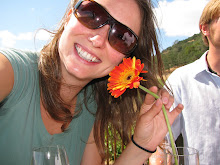
 When I began looking for pictures for this collage, I googled “thanksgiving.” The first pictures that came up were cartoon turkeys and white “American” families sitting down to a table laden with food. Deeper into the results, I found the first depictions of Native Americans. However, these were all cartoon “Europeanized Indians” with white faces, little cubby cheeks, and black hair adorned with feathers.
When I began looking for pictures for this collage, I googled “thanksgiving.” The first pictures that came up were cartoon turkeys and white “American” families sitting down to a table laden with food. Deeper into the results, I found the first depictions of Native Americans. However, these were all cartoon “Europeanized Indians” with white faces, little cubby cheeks, and black hair adorned with feathers. 

I also found pictures of animals in head dresses
and pilgrim hats, which I found offensive.
I also searched “first thanksgiving,” which gave me a few more results containing native Americans. However, there were four paintings which could have come out of a middle school history text book repeated over and over again. While presenting a more realistic depiction of the first thanksgiving in appearances, I am sure that they were painted by white artists who were rendering pictures of how they thought it would look like.

These collections of images gave me an idea how the American public views the Thanksgiving holiday. I was already aware of this perception, so I decided to approach this project from a different angle.
In elementary school, when I was taught about Thanksgiving, I understood that the Pilgrims would not have survived that first winter if it wasn’t for the Indians. In my mind, this translated to ‘white people would not be here if the Indians had not helped the pilgrims.’ Of course, now I know that not to be true, as there were waves of colonists that arrived from different countries in Europe. But about the first time I learned to story of the Indians and the Pilgrims, my parents also introduced me to the history of oppression that the Native Americans have endured since the Europeans arrived. As a child I thought that it was a horrible way for people to treat the people that had saved them in the first place. This is the idea I used to create this collage, how Euro-Americans have “shown thanks” all these years while still celebrating the kindness shown to the pilgrims by the Native Americans their first winter in North America.
